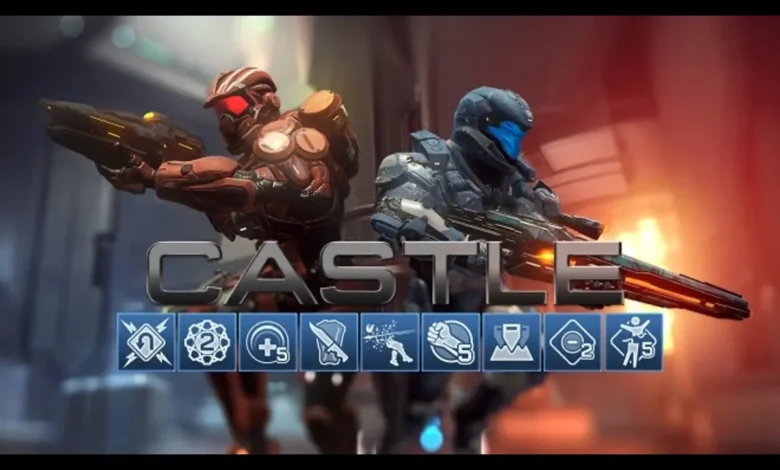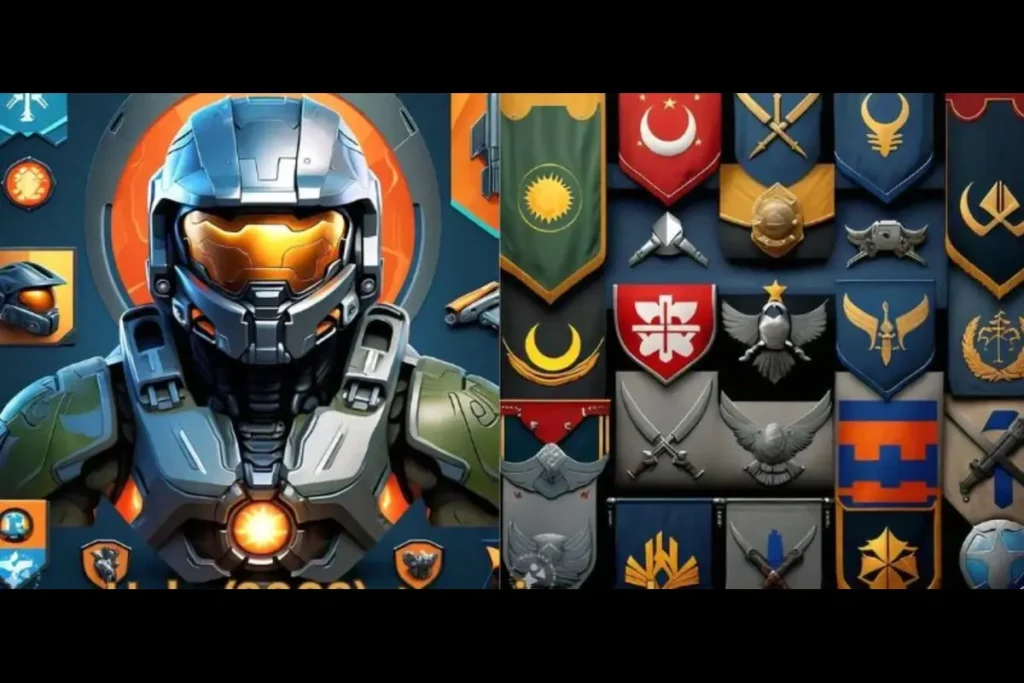Halo (2003) Game Icons and Banners: A Legendary Visual Evolution

Introduction to Halo (2003): A Game-Changer in the Industry
Halo: Combat Evolved, released in 2001 and often referred to simply as Halo, remains one of the most iconic games in the history of the gaming industry. Its influence on first-person shooters (FPS) and multiplayer experiences is undeniable, setting the bar for future games to come. Released for the Xbox, Halo helped put Microsoft’s gaming console on the map. However, its legacy isn’t just limited to gameplay. One of the defining aspects of Halo is its visual representation, including its icons and banners, which have evolved significantly since its launch.
When referring to Halo (2003) game icons and banners, it is crucial to acknowledge how these visual elements contributed to building a powerful brand identity for the game, one that has stayed with players for over two decades.
Halo (2003) Game Icons: A Symbol of Innovation
Icons have always been a vital part of video game branding. In the case of Halo (2003), its game icons were not only symbols representing the game itself but also helped reinforce the sci-fi and futuristic elements of the game.
1. Master Chief’s Helmet Icon
Perhaps one of the most recognizable game icons is Master Chief’s helmet. This icon immediately evokes thoughts of the game’s protagonist and has become synonymous with the Halo franchise. The simple, yet powerful design of the helmet icon helped players instantly recognize anything related to Halo. This game icon was a constant visual anchor in the marketing of the game, appearing on box covers, promotional materials, and even in the digital world.
2. The Halo Ring Icon
Another significant icon from the Halo (2003) game is the representation of the Halo ring itself. The halo ring icon symbolizes not only the vast, mysterious world that players would explore but also the existential themes embedded in the game’s lore. The circular design of the ring became a prominent visual feature that connected various aspects of the game universe and its branding.
3. Weapons and Vehicles Icons
Alongside the helmet and the Halo ring, icons representing iconic weapons like the Energy Sword and vehicles like the Warthog were essential in creating a cohesive visual language for the game. These game icons have been consistently used in Halo promotional materials, from in-game menus to marketing banners. They helped players quickly identify the tools they could use within the game, and these icons evolved with every new version of Halo.
The Evolution of Halo (2003) Game Banners
Visual branding in the form of game banners played a critical role in the success of Halo. These banners were used for promoting the game, advertising it across various platforms, and building anticipation in the gaming community.
1. Initial Game Release Banners
The earliest game banners from Halo (2003) featured images of Master Chief, the game’s main protagonist, often shown standing alone against a backdrop of alien worlds and galactic landscapes. These banners set the tone for the game’s visual aesthetic. The use of muted, cold colors emphasized the sci-fi genre and the impending sense of exploration and danger. The icons of Master Chief, the Halo ring, and various weapons were commonly integrated into these banners to reinforce the brand’s image.
2. Multiplayer Mode Banners
As Halo (2003) became widely known for its multiplayer features, the game banners began to reflect this growing aspect of the game. Multiplayer banners showcased multiple characters, either engaged in combat or showing off iconic weapons and vehicles. This shift in banner design helped signify that Halo was not just a solo experience but also a multiplayer phenomenon, which laid the foundation for the massive online gaming community that would form around the franchise in the coming years.
3. Remastered Editions and Anniversary Banners
In later years, remastered editions of the game featured updated banners with high-definition visuals. The game icons used in these banners were polished and refined, giving a modern touch to the classic images players had become familiar with. For instance, the iconic Halo ring was rendered in much greater detail, and Master Chief’s helmet received a more dynamic, sharper look in these updated visuals.
These remastered banners often emphasized nostalgia, reminding veteran players of their initial experiences with the game while inviting a new generation of gamers to join in. The mix of old and new visual elements, including remastered game icons and banners, helped Halo (2003) maintain its legendary status even years after its original release.
The Cultural Impact of Halo (2003) Game Icons and Banners
The cultural significance of Halo (2003) game icons and banners extends far beyond their initial release. The visual elements of the game became iconic not just within the gaming community but also in pop culture as a whole.
1. Game Icons as Memes and Symbols
Over the years, certain game icons from Halo have been adopted as memes or used symbolically in online communities. Master Chief’s helmet, for instance, has become a shorthand for courage, determination, and resilience. These icons are frequently used in online discussions, social media, and fan art, showing just how deeply ingrained Halo (2003) has become in popular culture.

2. Banners in Competitive Gaming
As Halo cemented its place in the world of competitive gaming and esports, banners became a way to identify teams, tournaments, and major events. The game banners for these events often featured variations of the original Halo (2003) icons, ensuring that the brand’s visual identity remained intact while evolving to fit new contexts, such as esports competitions.
The Legacy of Halo (2003) Game Icons and Banners
The legacy of Halo (2003) is not only defined by its gameplay and narrative but also by its visual representation. The game icons and banners from Halo (2003) have had a lasting influence on how future games approach branding and visual identity.
1. Influence on Future Games
Many games that followed Halo (2003) took inspiration from its minimalist yet impactful icons. The visual simplicity of the game icons in Halo proved that powerful imagery does not have to be overly complex. In terms of game banners, the evolution from simple character showcases to more action-packed multiplayer representations became a standard template for games in the FPS genre.
2. A Timeless Visual Identity
Even after more than two decades, the visual elements of Halo (2003), including its game icons and banners, remain timeless. The consistent use of the Master Chief helmet, Halo ring, and weapons in promotional materials, remastered editions, and new releases ensure that the brand continues to thrive. These icons are now etched in gaming history as some of the most recognizable symbols in the industry.
Conclusion: The Enduring Appeal of Halo (2003) Game Icons and Banners
In conclusion, Halo (2003) game icons and banners are much more than just visual aids—they are the foundation of the game’s identity. From the iconic image of Master Chief’s helmet to the detailed representation of the Halo ring, these visuals have helped shape the perception of the game and its place in the broader gaming landscape. The banners, too, have played a critical role in advertising and promoting the game to a worldwide audience, from its original release to remastered editions.
As the franchise continues to expand, the visual elements from Halo (2003) will remain an integral part of its enduring legacy, ensuring that it continues to be celebrated by both new and veteran players alike.







